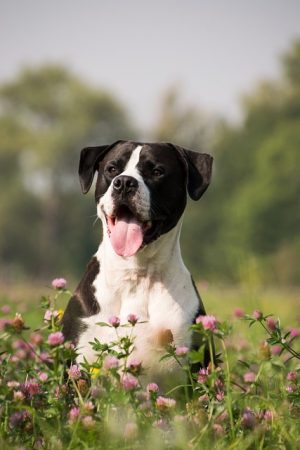2023 has seen significant advancements in pet care innovation with a focus on energy-efficient cooling systems for air-conditioned dog houses. Japan pioneered an eco-friendly design incorporating solar panels and advanced HVAC technology to create a sustainable microclimate for pets, aligning with its environmental ethos. Meanwhile, Australia introduced a smart air-conditioned dog house that features predictive weather technology and enhanced thermal regulation to maintain pet comfort while conserving energy. These developments emphasize the growing trend of integrating sustainability and cutting-edge tech in pet care, positioning air-conditioned dog houses as a crucial addition to canine well-being programs globally. The design and operation of these dog houses prioritize passive and active cooling techniques, insulation, smart technology, and maintenance practices to ensure pets remain comfortable while minimizing energy usage. These innovations reflect the commitment of pet owners and manufacturers to both animal welfare and environmental conservation.
Exploring the realm of pet care innovation, “Energy-Efficient Cooling” delves into the critical role of air conditioned dog houses in safeguarding our canine companions’ comfort and well-being, especially amidst rising temperatures. This enlightening article dissects the science behind canine thermal satisfaction and energy conservation, offering insights into designing an eco-friendly, cool retreat for pets. It explores sustainable materials and green technologies that optimize air conditioned pet enclosures, ensuring both energy efficiency and optimal comfort for dogs. Furthermore, practical maintenance and operational tips are provided to sustain the cooling systems’ effectiveness. Global case studies highlight successful implementations of these advancements, underscoring their significance in modern pet care.
Understanding the Need for Air Conditioned Dog Houses

The concept of an air-conditioned dog house may seem unconventional to some, yet it is a growing necessity in regions experiencing high temperatures and humidity. As pet owners increasingly recognize the importance of their canine companions’ comfort and well-being, the demand for innovative pet care solutions has soared. Dogs, like humans, are susceptible to heat stroke and other heat-related illnesses, making it imperative to provide them with a safe environment during the hottest days of the year. An air conditioned dog house offers a controlled climate that can protect dogs from the dangers of extreme heat. It ensures that their living conditions remain cool and comfortable, allowing them to thrive even when the outdoor temperatures are unbearable.
Moreover, these specialized habitats are designed with the dog’s safety in mind, featuring durable materials, efficient insulation, and reliable cooling systems. They can be equipped with programmable thermostats for energy efficiency, ensuring that power is conserved without compromising the dog’s comfort. The integration of an air conditioning system within a dog house is not just about luxury; it’s a practical solution to address the real physiological needs of pets in warm climates. By investing in an air conditioned dog house, pet owners are making a conscious decision to prioritize their dogs’ health and happiness, fostering a responsible approach to pet ownership in modern society.
The Science of Canine Thermal Comfort and Energy Efficiency

Canine thermal comfort is a critical aspect of pet care, especially during the warmer months when temperatures can rise rapidly. The science behind ensuring a dog’s environmental comfort involves understanding their physiology and how it interacts with external conditions. Dogs, like humans, rely on mechanisms such as panting to regulate body temperature, which becomes less effective in high humidity. An air-conditioned dog house thus becomes an essential tool for providing relief from the heat. It not only mitigates the risks associated with hyperthermia but also ensures that the pet remains active and healthy.
In designing energy-efficient cooling solutions for canine dwellings, several factors must be considered to optimize both the pet’s comfort and environmental sustainability. Insulation materials that reflect solar radiation are crucial to prevent excessive heat buildup inside the dog house. Additionally, strategic placement of vents and fans can enhance airflow and promote temperature regulation. The integration of smart technology, such as programmable thermostats and energy-efficient air conditioning systems, further enhances the dog’s living conditions while minimizing energy consumption. These advancements in air-conditioned dog houses exemplify a harmonious blend of pet well-being and energy efficiency.
Designing an Energy-Efficient Air Conditioned Dog House

An air-conditioned dog house represents a thoughtful application of energy efficiency, particularly in regions experiencing high temperatures and humidity. Designing such a structure necessitates a focus on passive cooling techniques alongside the integration of active cooling systems like an HVAC unit specifically tailored for canine comfort. Selecting materials with low thermal mass, such as lightweight insulation and reflective coatings, helps to minimize heat absorption. Strategic placement of the dog house in a shaded area or one that receives a gentle breeze can further enhance natural cooling effects.
Moreover, incorporating energy-efficient technologies, such as high-efficiency air conditioners with smart temperature controls, allows pet owners to maintain a comfortable environment for their pets without excessive energy consumption. These systems can be programmed to operate during peak heat hours and reduce operation when the ambient temperature is lower or more stable. Additionally, the use of energy-star rated appliances within the dog house, like compact coolers or fans, complements the air conditioning system to provide optimal cooling while conserving power. This dual approach ensures that pets remain cool and comfortable while promoting sustainable practices that respect the environment and conserve resources.
Materials for a Sustainable Cooling Environment for Pets

With the rise in temperatures, particularly during the summer months, ensuring a comfortable environment for pets has become paramount. Innovative materials and designs are pivotal in creating air-conditioned dog houses that provide a sustainable cooling solution. One such material is expanded polystyrene (EPS), which offers excellent insulation properties, keeping the interior cooler and more stable in temperature compared to traditional materials. These dog houses can be equipped with passive cooling systems like evaporative coolers or Phase Change Materials (PCMs) that absorb and release thermal energy as they change state, ensuring a consistent and comfortable environment for pets. The integration of smart technology, such as solar panels and programmable thermostats, further enhances the energy efficiency of these air conditioned dog houses, allowing them to harness renewable energy sources and adjust cooling systems autonomously based on real-time temperature data, thus minimizing energy consumption and promoting a sustainable approach.
Furthermore, the design of these pet retreats focuses on maximizing natural ventilation through strategic placement of vents and openings, facilitating cross-ventilation that helps to maintain a cooler interior without the constant operation of mechanical cooling systems. The use of reflective materials, such as white or metallic coatings that reflect solar radiation, also plays a role in reducing heat absorption, thereby complementing the passive cooling mechanisms and enhancing the overall energy efficiency of these air conditioned dog houses. These sustainable practices not only safeguard our furry companions from extreme heat but also align with broader environmental goals, making them an ideal choice for conscientious pet owners.
Implementing Green Technologies in Air Conditioned Pet Enclosures

In recent years, the integration of green technologies within pet enclosures, such as air conditioned dog houses, has become a priority for pet owners and environmental advocates alike. These specialized structures are designed to provide a cool and comfortable environment for pets during warm climates, harnessing energy-efficient cooling systems that reduce the carbon footprint associated with traditional air conditioning units. By utilizing advanced insulation materials and high-efficiency HVAC systems tailored for small spaces, these pet enclosures ensure optimal temperature control while minimizing energy consumption. The adoption of solar panels in conjunction with programmable thermostats allows for the harnessing of renewable energy, further enhancing the eco-friendly nature of these air conditioned dog houses. Additionally, the incorporation of LED lighting and energy-saving appliances within these enclosures contributes to a significantly lower energy demand compared to conventional pet housing solutions.
Furthermore, manufacturers are increasingly focusing on creating sustainable and modular designs for air conditioned dog houses that can be easily adapted or expanded as the pet’s needs change over time. These eco-friendly units often come with water conservation systems, such as rainwater collection and xeriscape landscaping around the enclosure, which not only aid in maintaining a sustainable environment but also promote a healthier lifestyle for pets. The commitment to integrating green technologies in pet enclosures is a testament to the growing awareness of environmental stewardship and the importance of creating living spaces that are both responsible and beneficial for our furry companions.
Maintenance and Operation Tips for Energy-Efficient Canine Cooling Systems

When implementing energy-efficient cooling systems for canine companions, particularly in an air conditioned dog house, maintenance and proper operation are key to ensuring your pet stays comfortable while minimizing energy consumption. Regular upkeep of the system includes cleaning or replacing filters as recommended by the manufacturer, which can improve airflow and efficiency. This not only promotes better indoor air quality but also allows the cooling system to run more efficiently. Additionally, it’s crucial to inspect the unit periodically for any signs of wear or damage. Sealing any gaps or cracks around the dog house can prevent warm air from infiltrating, which reduces the workload on the cooling system and conserves energy.
Optimizing operation of an air conditioned dog house involves strategic use of the system. During peak heat hours, it’s best to utilize a programmable thermostat to activate the cooling system at times when temperatures are highest. This approach ensures your dog is comfortable when they need it most while avoiding unnecessary energy use. Cross-ventilation strategies, such as opening windows or adjusting vents when the outdoor climate permits, can also enhance the effectiveness of the cooling system and further reduce reliance on air conditioning. It’s advisable to monitor indoor temperatures with a reliable thermometer to ensure the system maintains an optimal environment for your dog without wasting energy. By following these operation tips and maintaining the system diligently, you can create a safe and comfortable living space for your furry friend that is also energy-efficient.
Case Studies: Successful Air Conditioned Dog Houses Around the World

2023 has seen a surge in innovative solutions for pet care, with the concept of energy-efficient cooling in air conditioned dog houses gaining traction around the globe. In Japan, a pioneering design features eco-friendly insulation and solar panels that power an efficient HVAC system to maintain a comfortable temperature for canine companions during sweltering summers. This setup not only ensures the dogs’ well-being but also aligns with Japan’s commitment to sustainable living. In another example from Australia, where high temperatures are commonplace, a smart air conditioned dog house was developed using cutting-edge thermal regulation technology. It adapts to the environment by monitoring weather patterns and adjusting its cooling system accordingly, thus reducing energy consumption while providing optimal comfort for dogs. These case studies exemplify the potential of integrating sustainable practices with technological advancements in pet care solutions, showcasing the viability of air conditioned dog houses as a global phenomenon.
